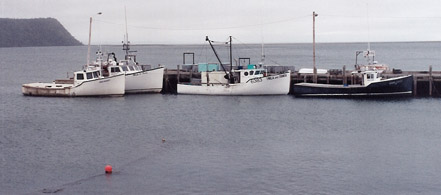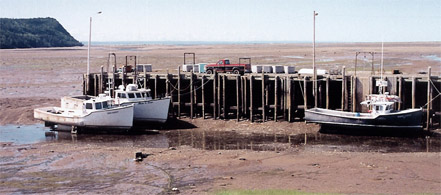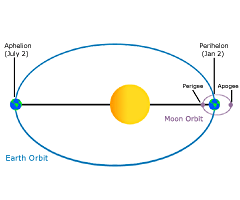Tidal Currents 2
Currents Tutorial
Also similar to tides, tidal currents are affected by the relative positions of the moon and Earth. When the moon and Earth are positioned nearest to each other (perigee), the currents are stronger than average and are called “perigean currents.” When the moon and Earth are at their farthest distance from each other (apogee), the currents are weaker and are called “apogean currents.”
The shape of bays and estuaries also can magnify the intensity of tides and the currents they produce. Funnel-shaped bays in particular can dramatically alter tidal current magnitude. The Bay of Fundy in Nova Scotia is a classic example of this effect, and has the highest tides in the world - over 15 meters (Thurman, H.V., 1994).


The daily tidal currents experienced by coastal areas can also have a dramatic effect on estuarine ecosystems. View a slide show of the remarkable daily rise of waters at the Elkhorn Slough National Estuarine Research Reserve in California: https://oceanservice.noaa.gov/education/tutorial_estuaries/media/supp_est01a_tide.html
Currents Lessons
- Welcome
- Tidal Currents 1
- Tidal Currents 2
- Waves
- Longshore Currents
- Rip Currents
- Upwelling
- The Coriolis Effect
- Surface Ocean Currents
- Boundary Currents
- The Ekman Spiral
- Thermohaline Circulation
- The Global Conveyor Belt
- Effects of Climate Change
- Age of Exploration
- What is a "knot"?
- Shallow Water Drifter
- Deep Ocean Drifter
- Current Profiler
- Shore-based Current Meters
- How Currents Affect Our Lives?
- References
- Roadmap to Resources
- Subject Review
